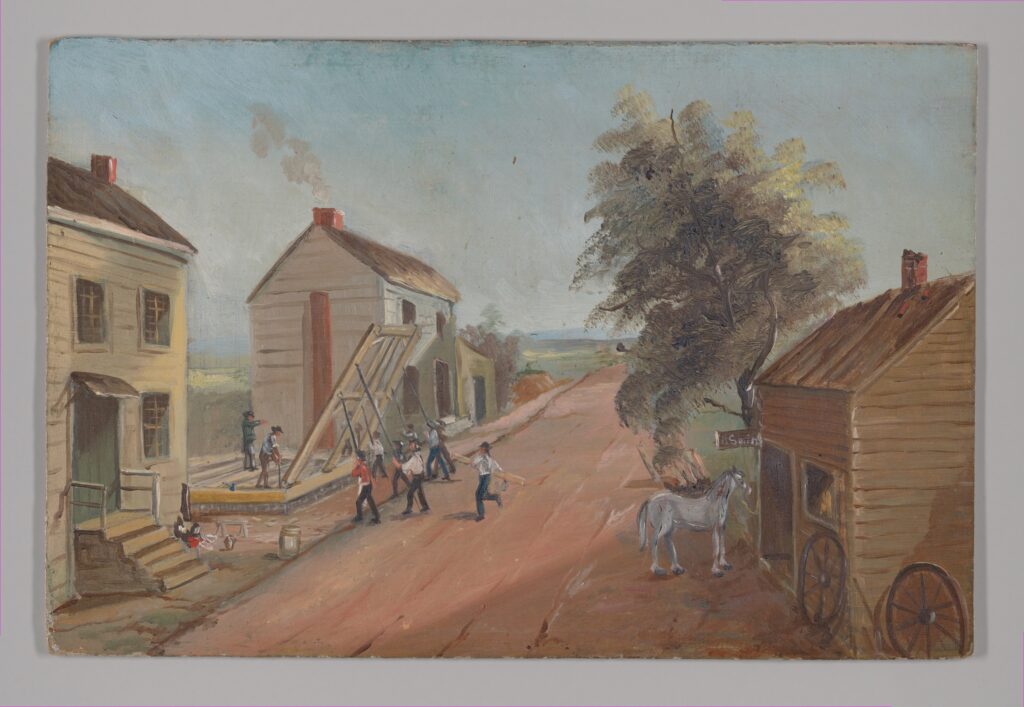
Raising Parties in Colonial Westborough
Craft is a social act. We first learn a craft from people who are proficient at it, and as time goes on and we become more accomplished ourselves, we trade tips and techniques with each other to improve the results of our work. So what better way to begin exploring the history of craft in Westborough than to examine times when the whole community would gather together to offer their crafting skills to help others?
Colonial settlers in Massachusetts had to build their own individual houses and barns. They could do a lot of the work by themselves, but in creating a structure so big, there comes a crucial point during the project when the physical labor of others is needed. The construction of public structures, such as meeting houses, also required the help of community members, who volunteered their labor and time to create buildings that belonged to everybody in town.
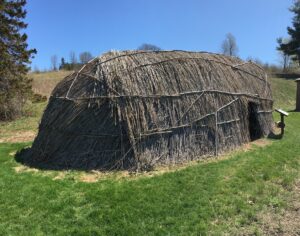
When colonists came to America to found the Massachusetts Bay Colony in 1630, they quickly needed to build shelters. Naturally, they copied the wetus of Indians who had learned to live in the Eastern woodlands for millennia. The structures were rectangular with arched roofs. The frames consisted of poles lashed together with vines, which were then covered with bark or woven matting. But rather than rely on smoke holes at the top of the house, as Native Americans did, the settlers created chimneys made out of sticks and clay. Needless to say, these makeshift chimneys often caught fire.
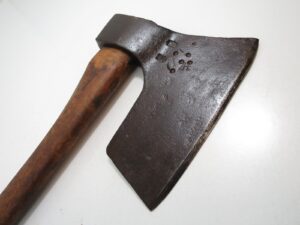
Once societies stabilized, the colonists turned their attention to building more permanent structures. Individual households had to cut down their own trees to build their own houses. Once they felled enough trees that were tall and long enough, they squared the timber using a broadax and, if the timber was to be visible inside the house, smooth it out with an adz. Once enough timbers were created, colonists then dug out space in the ground for a cellar for frost-free storage, lined it with stones laid with mud, and then built a stone chimney. After beams from the timbers were fashioned together into a frame, the frame then had to be raised and put into place. Families could not accomplish this last task on their own, so they threw a raising party to solicit the help of other members of the community.
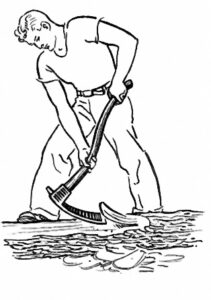
Raising parties were community events. Neighbors were invited to the property of the family building the structure for a work party, and as the men guided the frames into place and secured them, women prepared and served plenty of food and drink for everyone. Our modern equivalent is buying pizza and beer for friends who volunteer to help someone move—although that turns out to be a young-person’s practice as most adults eventually wise up and realize that reciprocation to help them move at a later date will probably not be forthcoming. Anyway, once the frame was up, individual families could pretty much finish building the structure on their own. Raisings were hard work, and if you have ever seen the 1985 movie Witness and the “building a barn” scene, you will have an idea of what is involved.
Rev. Ebenezer Parkman, Westborough’s first minister, often recorded raisings of houses, barns, meeting houses, and even mills in his diary. Some of the structures built were quite large. Parkman records that a raising on June 14, 1742 at Captain Fay’s resulted in a barn that measured 70 feet in length. Large numbers of people gathered for raisings. On July 10, 1782, Parkman’s son, Breck, raised his house—“28 feet Front; 30 feet back”—and even though 115 people showed up at the gathering, Parkman observed that “Through the Goodness of God there was no Evil Occurrence.” That was not always the case, and in many instances, raisings turned out to be problematic affairs for the minister: on June 20, 1726, Parkman attended a barn raising at Mr. Tainters and noted, “It was a pleasant time, but not altogether without Trouble and Toil.”
Much to the chagrin of Parkman, the raising of a large barn on Captain Maynard’s property on April 30, 1744 met with an accident and later devolved into a raucous party that lasted through much of the night. The entry tells us as much about the nature of raisings in Westborough as it does about Parkman and his temperament, as he returned two times at various points in the night to check up on the gathering after first retiring to bed:
Captain Maynard rais’d another Large Barn. My Wife and I were there. N.B. One Goodhew, a Young Man from Boston residing among us, had a fall from the Frame and was led into the House much hurt, but afterwards recover’d. At Supper there were So many to be entertain’d that we were kept till 10 o’Clock. I manifested so much uneasiness that we were so detain’d that I concluded everybody would retire home as Soon as they might, but it prov’d otherwise. Many tarried long after I was got home and the Time run off; among the rest 3 of my own Family. After 12 I walk’d away towards the House again. Ebenezer and Thomas Needham were returning home — upon which I went to my Bed — but understanding that there were many yet behind and among them Some Heads of Family, I rose very uneasy and went down to the House, and having acquainted Captain Maynard with what Time of Night it was, I ask’d him whether he did not Consent to my going in among the Company that were Still diverting themselves at this unseasonable Time. I went in and admonish’d them, and sent them home. N.B. George Smith (the Taylor) and Robert Bradish made the Chief Stand — but Smith I Sent off and Bradish took up his Lodging there. This Exerting my Authority gave me great uneasiness, but I was resolute to Shew Impartiality and not be partaker of other Mens Sins, as likewise to discharge my own Duty as Watchman in this Place and as having the Care of their Souls.
When it came time for the town to build a new meeting house on May 3, 1749, Parkman knew better and used the pulpit the Sunday before to give “the People a fervent Caution and Exhortation respecting their Conduct on the design’d Raising of a new Meeting House.” The structure to be raised was quite large: fifty feet long and forty feet wide, with posts twenty-three feet high. Happily, “The Frame went up well; and through God’s great Goodness, Neither Life nor Limb lost. The only Hurt I have heard of was by the Fall of a Board which graz’d a man’s forehead but Slightly.” An accident-free raising was not guaranteed, though, since the precinct voted to purchase a half barrel of rum for the occasion. Still, some of the attendees did not heed Parkman’s earlier warning at the pulpit: “the Impudence of Young Men with the Young Women was with them very Shameless. I was obliged to go and reprove several.”
After the new meeting house was constructed, Parkman built a new house for him and his family with the help of many townspeople, who chipped in to dig the cellar, build a chimney, construct the frame, and then raise it. During the raising on September 7, 1750, “Sundry Neighbours Sent and brought Cheese, Cake, Wheat Bread, etc. which with Some Apples Pyes which my Wife provided, made up our Entertainment.” Six months later, Parkman visited Ebenezer Rice to pay him for the rum he borrowed from him, “chiefly for raising my New House, my Well, Cellar and Chimney work.”
Even though raisings often caused Parkman a host of anxiety and trouble, the people of Westborough clearly enjoyed such gatherings. The building of the town was a community effort, since everyone knew that they at one point would need to rely on the kindness of neighbors to ply their craft and help them build the structures they needed to create a flourishing life for themselves.
—Anthony Vaver, Local History Librarian
Works Consulted:
- Craft: An American History by Glenn Adamson.
- Colonial Living by Edwin Tunis.
- The Ebenezer Parkman Project: “Raisings: Houses, Barns, Meeting Houses, and Other Structures”.
- The History of Westborough, Massachusetts by Heman Packard DeForest and Edward Craig Bates. Online edition.
* * *
The Violet Protest
I grew up in a crafting family. Both of my parents are crafters, and they always encouraged me and my siblings to take up sewing, woodworking, and other crafting skills. I spent a lot of time in my youth at craft fairs, where my parents sold the items that they made, and I was able to wander about looking at other people’s wares and watching craft demonstrations.
After I announced a series on craft in my last newsletter and argued that craft has the potential to overcome political divisions once we start working together with our hands, my mom sent me an e-mail to tell me about The Violet Protest, “a public effort to send bundles of hand-made textile squares to each and every member of Congress in support of these core American values”:
- Citizenship
- Compromise
- Country over party and corporate influence
- Courage
- Candor
- Compassion
- Creativity
- Respect for the other
In 2021, my mom contributed 50 squares to the project.
You can watch a documentary on the Violet Protest on the Web, or you can wait until May when it will be released for broadcast on PBS stations. Not coincidentally, the first speaker in the documentary has a copy of Craft: An American History by Glenn Adamson sitting next to her, the book that inspired me to start this series on craft.
* * *
A Busy Historical Society
The Westborough Historical Society is busy during this time of year with two events:
- Sunday, April 28th 1:00-4:00pm: Westborough Historical Society Open House: Visit period rooms and take a docent tour of four centuries of artifacts that capture Westborough’s history. Westborough Historical Society, 13 Parkman Street, free.
- Monday, MAY 6th 6:30pm: You Can Write and Publish a Book! Published authors from Westborough describe their experiences on writing and getting their work published. This discussion will include Dr. Wednesday Boateng, Dr. Mary Christensen, Jillian Hensley, Phil Kittridge, and Tom Salvemini. Co-sponsored by Westborough Public Library. Westborough Library Meeting Room, 6:30pm, free.
* * *
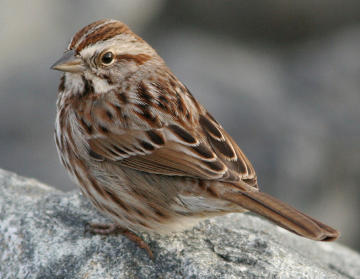
The Senses of Spring
Spring hits the senses with many joys: the feel of the warm sun finally hitting bare skin, the taste of fresh spring vegetables, the sight of budding greens, and the return of earthy smells. But one of the best joys of the senses is once again hearing birds jubilantly singing their songs. That’s when you really know that spring has truly arrived!
Annie Reid tells us all about one of these birds, the song sparrow, and why its singing is so intense at this time of year, and covers other sure signs of spring, in her Nature Notes for April.
* * *
Did you enjoy reading this Westborough Center Pastimes newsletter? Then subscribe by e-mail and have the newsletter and other notices from the Westborough Center for History and Culture at the Westborough Public Library delivered directly to your e-mail inbox.
You can also read the current and past issues on the Web by clicking here.

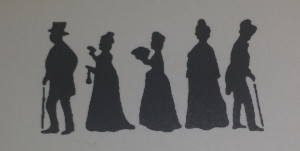
This was a really good one. I liked reading Rev. Parkman’s notes, especially about admonishing others for their late party. Hilarious!
Yes, Parkman sure displays his personality in these entries! Thanks for your comment!